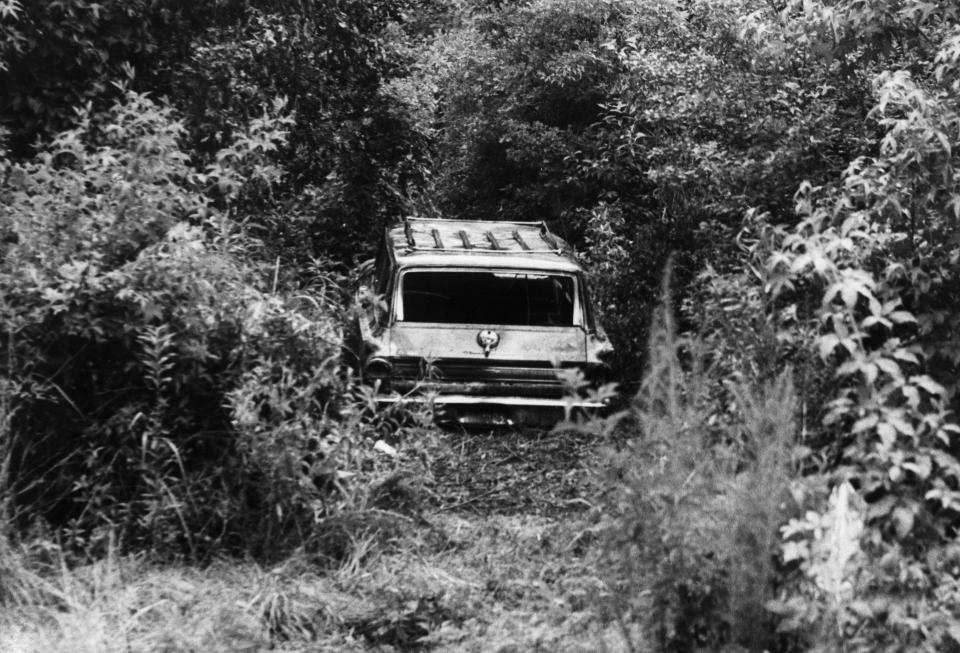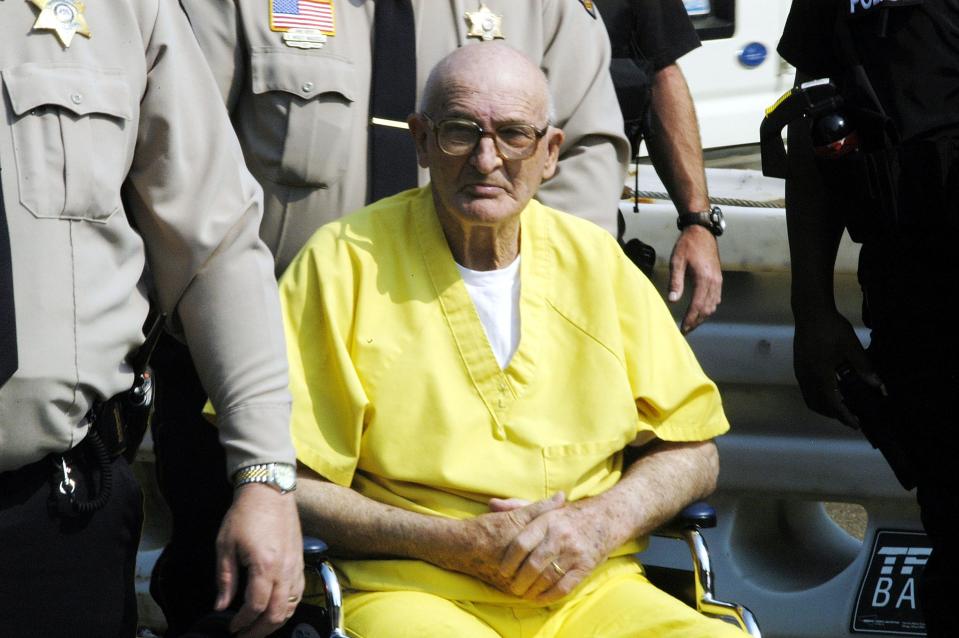The Mississippi Burning Murders Changed Civil Rights History
- Oops!Something went wrong.Please try again later.
- Oops!Something went wrong.Please try again later.
- Oops!Something went wrong.Please try again later.
- Oops!Something went wrong.Please try again later.
James Chaney, Andrew Goodman, and Michael Schwerner planned to spend the sticky summer months of 1964 helping Black Mississippians register to vote. The three young civil rights activists hailed from New York: Schwerner was a white, Jewish social worker who participated in civil rights activism through the Congress of Racial Equality (CORE); Chaney was a Black instructor with CORE; and Goodman was a white, Jewish student at Queens College and CORE volunteer.
On June 21, 1964, the bodies of the three men were found in a ditch on a country road near the town of Philadelphia. The “Mississippi Burning” murders, as they came to be known, were some of the most talked-about killings of the civil rights era.
Asked why these killings attracted so much media attention while so many others during the Jim Crow era did not, Clayborne Carson, a professor of history at Stanford University and founder of the Martin Luther King Jr. Research and Education Institute, offered a simple explanation. “Because,” Carson told Teen Vogue, “two of the victims were white.”
The triple murder helped galvanize national outrage over the brutal regime of racist violence that held sway in the Deep South, as well as support for the Civil Rights Act of 1964, which passed that July. They endured as a touchstone of racial politics in the United States — Ronald Reagan infamously launched his 1980 presidential campaign near Philadelphia, Mississippi — and speak to the barriers that still prevent Black Americans from engaging in their fundamental right to vote.
Chaney, Goodman, and Schwerner were in Mississippi as part of the “Freedom Summer,” an initiative launched by the Freedom Riders movement in which over 700 college students traveled to the state to help register Black voters and support local civil rights organizing. Many of them were involved with CORE, a student organization founded in 1942 on principles of non-violent, direct action inspired by Mahatma Gandhi.
“That’s what the Freedom Riders campaign was all about,” Carson said, “to respond to violence by saying, ‘We’ll just bring more people. You can’t end the movement simply by these violent attacks against civil rights workers. That will simply strengthen the movement because more people will come in spite of the violence.’”
Schwerner, Chaney, and Goodman first drove to Ohio to train other Freedom Summer volunteers in voter registration practices, then south to Mississippi. On June 21, 1964, the three were on their way to Meridan, Mississippi, first stopping at Mount Zion Baptist Church, where Schwerner had once worked. The previous week, the church had been burned and several of its Black attendees were beaten by Klu Klux Klan members. After leaving the church, deputy sheriff Cecil Price identified their car as a CORE vehicle and pulled the men over on speeding charges. Schwerner and Goodman were held for “investigation.”
About six hours after Price brought the three men to the Philadelphia jail, they were released with instructions to leave the county. But they never even had the chance.
On June 22, the three men were considered missing and the FBI opened a kidnapping investigation. On June 23, their car was found burned. More than 200 federal agents soon arrived on the scene, and the case quickly attracted widespread media attention. In an interview with the press, Schwerner’s wife, Rita, minced no words about the reason for the national interest in the case: “The slaying of a Negro in Mississippi is not news. It is only because my husband and Andrew Goodman were white that the national alarm has been sounded.”

Burned Station wagon of Missing Civil Rights Activists
To her point, the bodies of eight other Black murder victims were found during the search for the trio. Two were apparently college students who had been killed weeks earlier, while another was found in a CORE T-shirt, as PBS detailed.
Those individuals “were probably victims of similar violence, but they were Black and those attracted very little attention,” Carson said. “The fact that two of the victims here were white from the North, there was more of a sense of identification with them. And that brought more press attention and more federal attention to this case.”
On August 4, the bodies of Chaney, Goodman, and Schwerner were finally found in an earthen dam. The long search was over.
Throughout the summer, the FBI was able to put together the facts of the case:
Price, Sheriff Lawrence Rainey, other Klan members of the local chapter had conspired to deny the rights of the three men, setting events in motion with the trumped-up arrests for speeding.
Shortly after Schwerner, Chaney, and Goodman were released from jail, Price followed them in his car. Two other cars filled with KKK members helped chase the three men down. Chaney was singled out and killed most brutally. The other two men were shot soon after, though Goodman apparently did not die from a shot wound — he was most likely buried alive.
“The killings happened at the beginning of a project to register Black voters in the South Mississippi summer project,” Carson waid. “And before this project even got started, these three people had been jailed and released and then murdered by people that included law enforcement — that included police. People who should have been protecting them [contributed to their deaths].”
The Mississippi legislature decided not to try this case due to “insufficient evidence,” even though several men confessed. While the federal government could not charge any perpetrators with murder, they arrested 21 individuals — including deputy Price —with conspiracy to murder.
Only seven of the men were ultimately convicted. While the harshest sentence carried out was only six years, in 2005, after new evidence was brought to light, Klan member Edgar Ray Killen was arrested for organizing the lynch mob and sentenced to serve 60 years. He died in prison 13 years later, in 2018, of natural causes. The investigation was officially closed in 2016 because, according to former Mississippi Attorney General Jim Hood, “It’s just gotten to the point that it’s 52 years later and we've done all we can do.”

Edgar Ray Killen Sentenced For Civil Rights Workers Murders
The murders have cast a long shadow over U.S. history, inspiring legislation, art, and reflection. Most critically, the media attention behind them has been credited with pressuring the U.S. government to pass the landmark Civil Rights Act of 1964 , prohibiting discrimination on the basis of race, color, religion, sex, or national origin. Mississippi Burning, a 1988 movie about the case starring Frances McDormand, introduced a new generation to the murders and the climate in Mississippi at the time. And in 2014, the three men were posthumously awarded the Presidential Medal of Freedom by President Barack Obama. At the time, Congressman Bennie G. Thompson of Mississippi’s second congressional district wrote that the award represented their “ultimate sacrifice” toward “making this country a more perfect Union.”
Carson drew a connection between the work of civil rights organizers like Chaney, Schwerner, and Goodman, and the uprisings against racist violence that erupted after the police killing of George Floyd in summer 2020, more than four decades later. “I don’t think that people involved in Black Lives Matter have that same sense [of fear] that because they are protesting against it and even [engaging in] civil disobedience, the risk of them getting killed is far less than it was,” he said. “We have had other, obviously lots of police killings, but we haven’t had police killings targeting protestors — non-violent protesters. That kind of violence was, I guess, characteristic of that time…. The level of violence [under the] Jim Crow system in the South was unlike anything that has happened since.”
Carson, who attended the March on Washington at 19 years old, said he was “very proud” of the contemporary protest movement, expressing hope for the future of racial justice organizing. “It shows that young people have learned valuable lessons from the past,” he said. “And they have said that they’re not going to tolerate this sort of thing.”
Want more from Teen Vogue? Check this out: The Battle of Blair Mountain Was the Largest Labor Uprising in U.S. History
Stay up-to-date with the politics team. Sign up for the Teen Vogue Take!
Originally Appeared on Teen Vogue

